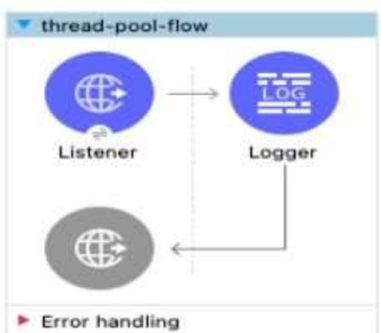Free MuleSoft Integration Architect I Exam Questions - Salesforce MuleSoft Integration Architect I Exam
Salesforce Certified MuleSoft Integration Architect I
Total Questions: 273Salesforce MuleSoft Integration Architect I Exam - Prepare from Latest, Not Redundant Questions!
Many candidates desire to prepare their Salesforce MuleSoft Integration Architect I exam with the help of only updated and relevant study material. But during their research, they usually waste most of their valuable time with information that is either not relevant or outdated. Study4Exam has a fantastic team of subject-matter experts that make sure you always get the most up-to-date preparatory material. Whenever there is a change in the syllabus of the Salesforce Certified MuleSoft Integration Architect I exam, our team of experts updates MuleSoft Integration Architect I questions and eliminates outdated questions. In this way, we save you money and time.
Salesforce MuleSoft Integration Architect I Exam Sample Questions:
A gaming company has implemented an API as a Mule application and deployed the API implementation to a CloudHub 2.0 private space. The API implementation must connect to a mainframe application running in the customer's on-premises corporate data center and also to a Kafka cluster running in an Amazon AWS VPC.
What is the most efficient way to enable the API to securely connect from its private space to the mainframe application and Kafka cluster?
Refer to the exhibit.

A customer is running Mule applications on Runtime Fabric for Self-Managed Kubernetes
(RTF-BYOKS) in a multi-cloud environment.
Based on this configuration, how do Agents and Runtime Manager
communicate, and what Is exchanged between them?
A stock trading company handles millions of trades a day and requires excellent performance and reliability within its stock trading system. The company operates a number of event-driven APIs Implemented as Mule applications that are hosted on various customer-hosted Mule clusters and needs to enable message exchanges between the APIs within their internal network using shared message queues.
What is an effective way to meet the cross-cluster messaging requirements of its event-driven APIs?
Why would an Enterprise Architect use a single enterprise-wide canonical data model (CDM) when designing an integration solution using Anypoint Platform?
A payment processing company has implemented a Payment Processing API Mule application to process credit card and debit card transactions, Because the Payment Processing API handles highly sensitive information, the payment processing company requires that data must be encrypted both In-transit and at-rest.
To meet these security requirements, consumers of the Payment Processing API must create request message payloads in a JSON format specified by the API, and the message payload values must be encrypted.
How can the Payment Processing API validate requests received from API consumers?



Currently there are no comments in this discussion, be the first to comment!